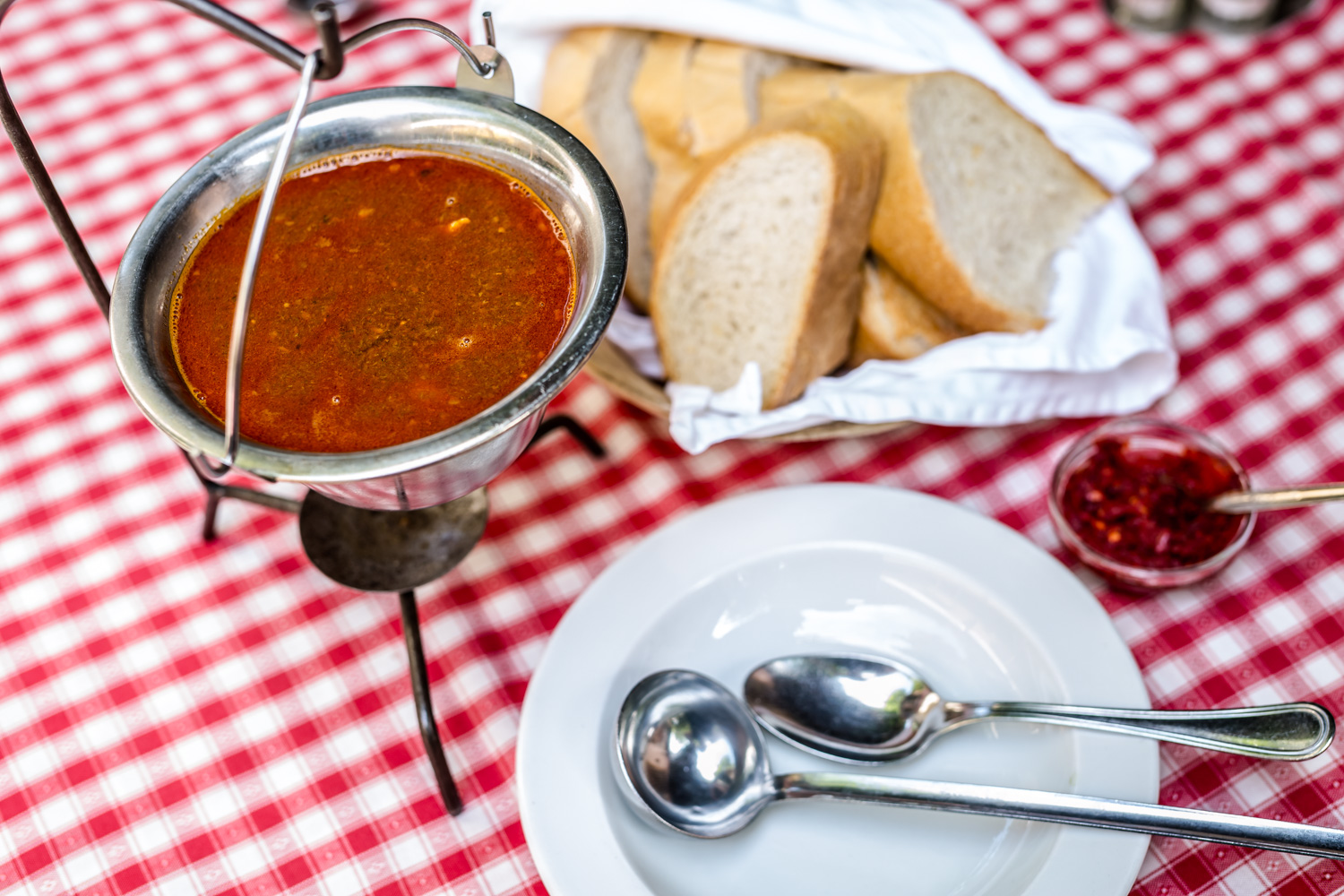Scouring contemporary restaurant menus and antiquarian stores for dusty recipe books, Annabel Barber and her editorial team at Blue Guides have created a culinary dictionary with a difference. “There are several books in English about Hungarian wine, but actually not that much on its cuisine,” says Annabel. “So this is, essentially, a lexicon of food terms. Anything you might hear at the market, in a restaurant, a shop or in the kitchen.”
Starting with abált szalonna – literally ‘simmered bacon’ but so much more, as a longer peruse will reveal – and finishing with the red-wine grape of Zweigelt created in 1922 in Austria by the eponymous Dr Friedrich, Hungary Food Companion brings centuries of gastronomic culture to the table.

Beyond the A-Z, Hungary Food Companion is a thoroughly entertaining read. Every page opens up a cornucopia of detail deeply rooted in this exotic island surrounded and influenced by Latin, Balkan, Slav and Germanic culinary domains. “Most Budapest restaurants have English-language menus these days,” says Annabel, “but we delve into Hungary’s food culture and traditions. Some Hungarians disparagingly think of their cuisine as unhealthy and fatty. They have a plethora of Nobel-prize winners but seem afraid to promote themselves in other fields.
”Having created an Italy Food Companion for Blue Guides a couple of years ago, Budapest-based Annabel is well placed to compare the two countries where gastronomy is concerned: “Italy is more self-confident, its cuisine is globally fashionable. This isn’t so much the case with Hungary. Italy differs from region to region, food, dialects and vocabulary. Hungary is more unified, with pretty much the same terms used across the country”.
In researching this book, Annabel and colleagues were often struck by the contrast between disappearing traditional dishes and new innovative cuisine. “Gastronomy here still follows the seasons, asparagus, for example, or wild garlic, in soups, in scones and on special menus. So far, the most enthusiastic feedback we’ve had has been from émigré Hungarians in North America. ‘This takes me back to my grandmother’s kitchen’, is a typical comment.”
Annabel is at pains to stress that the book has been a group effort, editorial brainstorming coming up with vignettes such as Hungarian Christmas treats for Mikulás, Károly Gundel’s century-old recipe for a classic Jókai bean soup, and the 22 cuts of pork possible from any given pig.
All is superbly illustrated by Csenge Hangay, an emerging, self-taught talent, chanced upon by Annabel when her watercolours were on show at Budapest bookstore Massolit. Hungary Food Companion is Csenge’s first book.

Throw in all kinds of literary links, tips on being a guest when invited to a Hungarian home for dinner and a guide to spritzer measurements of wine and soda, and this is a welcome and much-needed addition to any Hungarophile’s bookshelf. The Companion’s companion speaking app should be expected later this spring.
As for Annabel, this project has given her a real taste for further culinary adventure. “I’m looking to explore the Hungarian countryside to create a series of blog posts,” she concludes. “Who knows what I might find?”
Hungary Food Companion, 2,500 forints/£9.95, online at Blue Guides or from Bestsellers, District V. Október 6 utca 11.




